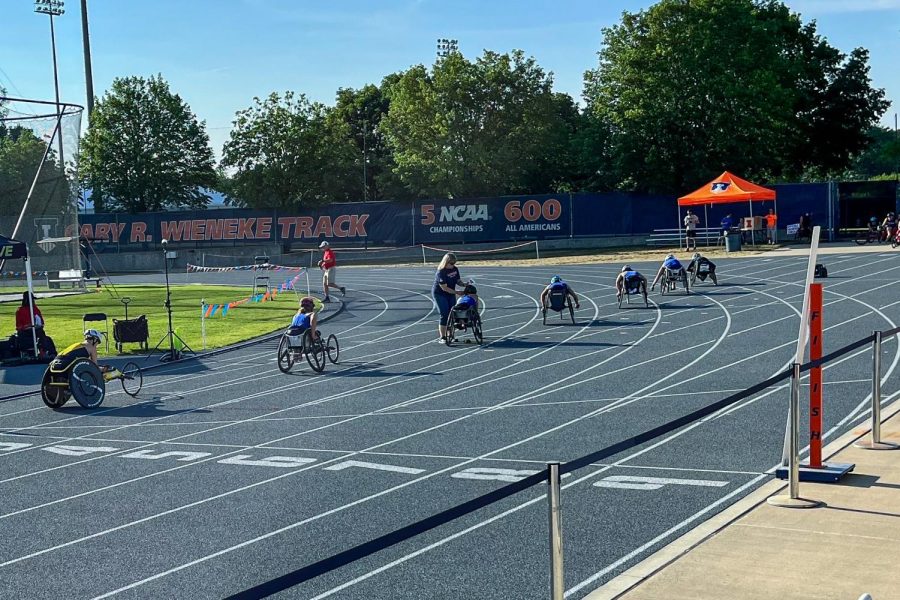UI’s world-qualifying wheelchair athletes strive for success
June 2, 2023
The World Para Athletics Championships will be taking place in Paris from July 8 to 17. Of 45 qualifiers from the United States, six are current or former Illini.
Ranked as one of the most accessible universities in the country, the University of Illinois has presented a strong front in parasports. A prominent example includes the University being the first in the country to introduce a collegiate wheelchair basketball team in 1948.
The University’s elite para track and field team is no different in terms of its strength, producing multiple Paralympians in wheelchair racing.
Able-bodied and para track and field competitions run fairly similarly, though there are some key factors involved in making the sport accessible for everyone.
Due to the variety of impairments that para athletes may face, they are each identified under classifications describing their disability. Though they may seem confusing at first, the classifications are fairly easy to understand.
Get The Daily Illini in your inbox!
According to the official world para athletics website, track and field athletes are categorized first by a letter — “T” for track and “F” for field — which is followed by a number.
The numbers, ranging from 11 to 64, describe the specific impairment each athlete has. A full list of categories can be found here.
The first digit describes which “disability family” the impairment belongs to — for example, visual impairment, amputee, intellectual disability, etc. — while the second digit describes the severity, with one being the most severe and eight being the least.
World para athletics describe these categories as similar to age categories, such as u18 for competitors under 18, or weight classifications used in other sports.
For example, 20-time Paralympic medalist and University alum Tatyana McFadden races in the T54 category, indicating that she is a wheelchair track athlete, with her impairment being paralysis from the waist down, specifically the birth defect spina bifida.
Hannah Dederick and Susannah Scaroni, also former Paralympians and world qualifiers from the University, both race in the T54 category as well. However, classification does not indicate event, as Dederick qualified for sprints while Scaroni specializes in longer events.
Dederick, like McFadden, was born with spina bifida, while Scaroni suffered a spinal cord injury at a young age. Despite being slightly different impairments, both fit into the T54 category.
The final female competitor coming from the University, Paralympian and world qualifier Eva Houston, competes in the T34 category — which indicates a form of cerebral palsy — and has qualified for Paris 2023 for sprints as well.
Houston and Dederick will both be making their world championship debuts this summer, following their debuts on the Paralympic stage a couple of years ago at Tokyo 2020.
On the male side, experienced Paralympian and world competitor Brian Siemann will be competing in the T53 category while former Chicago, Boston, New York and London marathon winner Daniel Romanchuk will race in T54.
The selection for the U.S. world team comes after an intense three days of competition at the national meet in Chula Vista, California where the Illini Elite team showed an incredibly strong series of performances.
According to an official release from Team USA, over 150 athletes competed at the national championships in an attempt to hit the qualifying standard in each of their events.
All eyes will be on the 45 Americans taking on Paris in July, with some strong Illinois representation in the mix.







